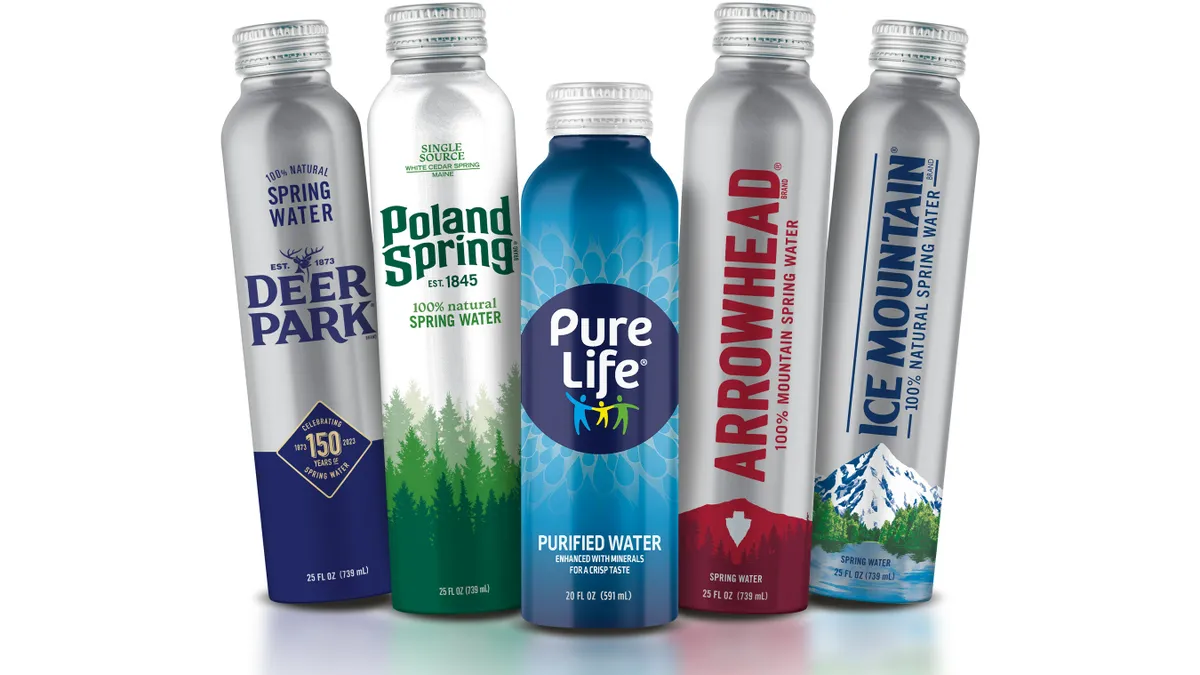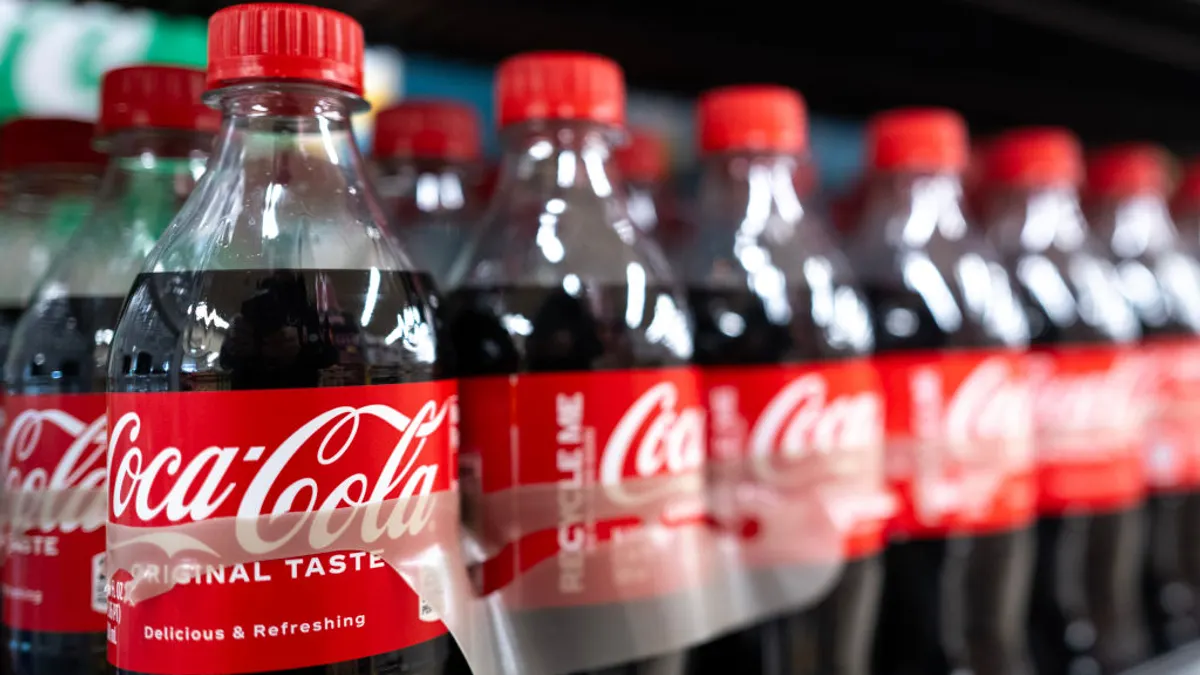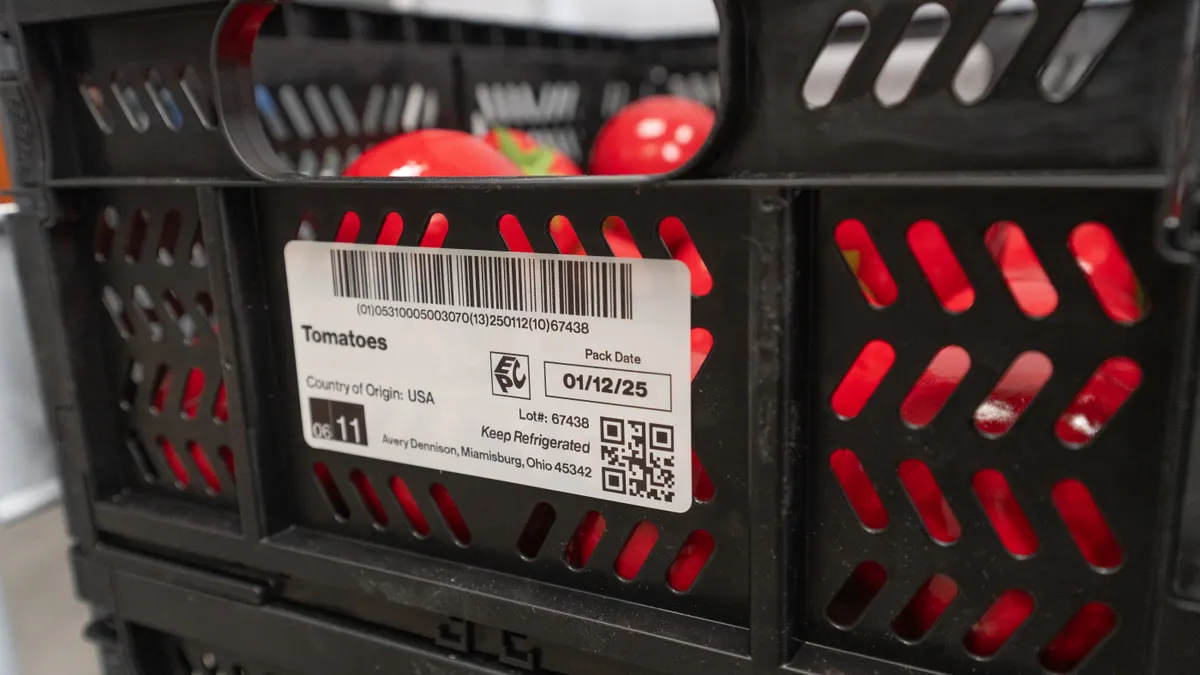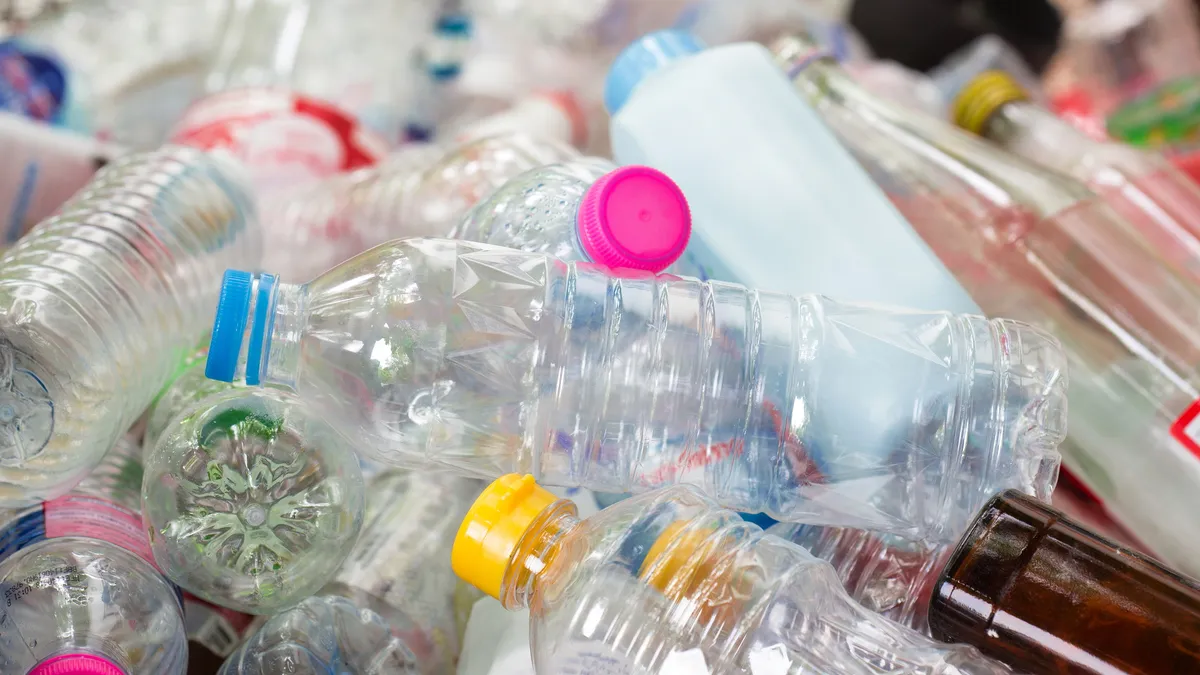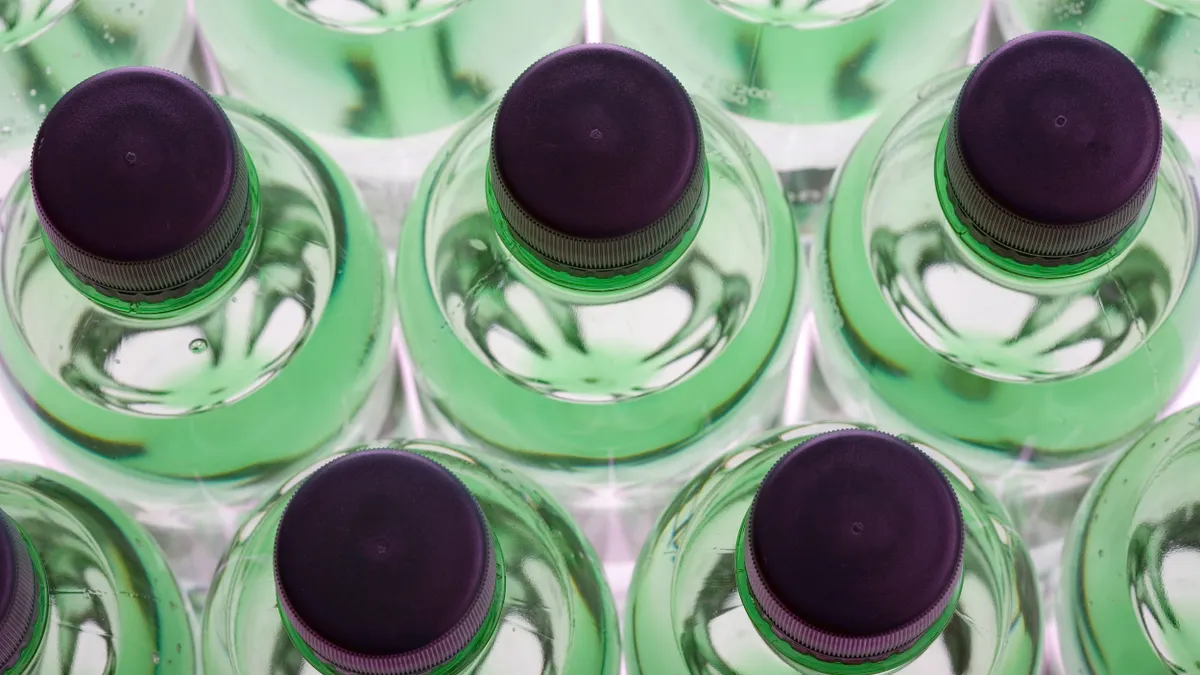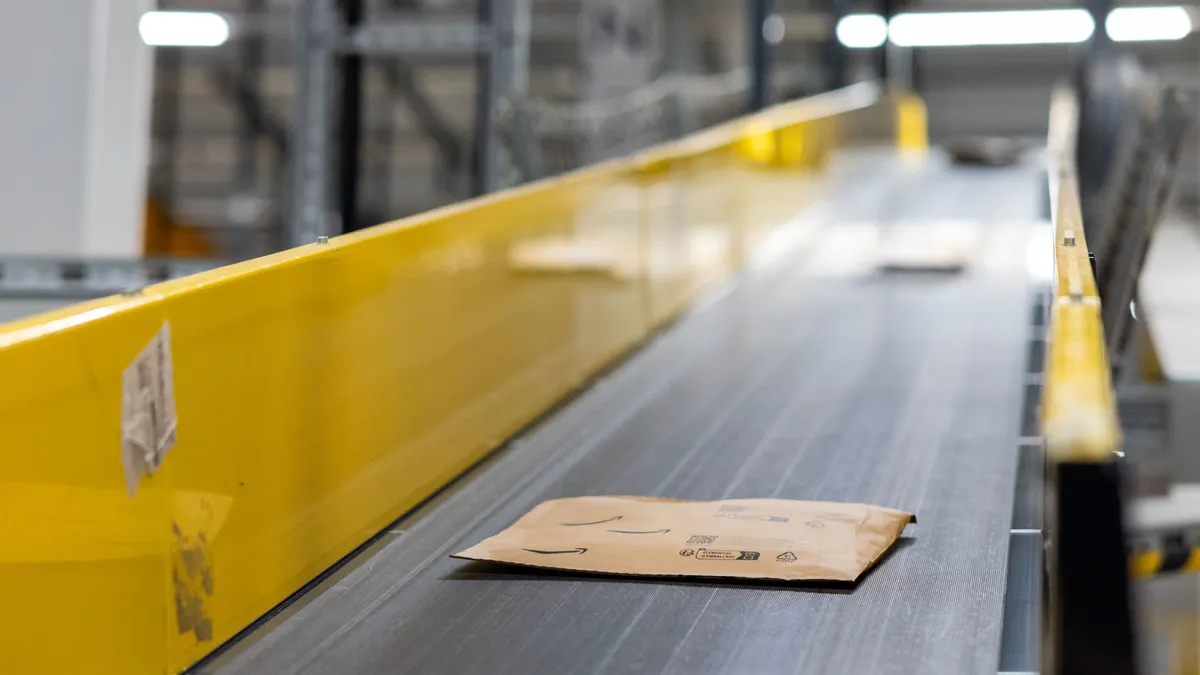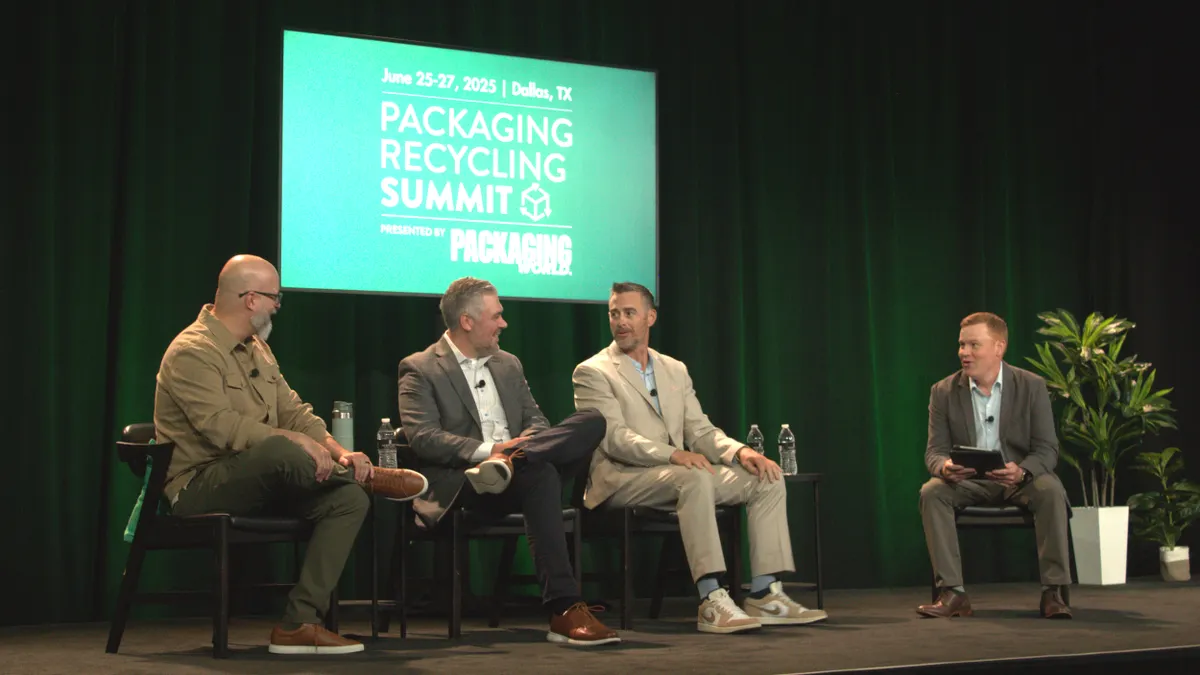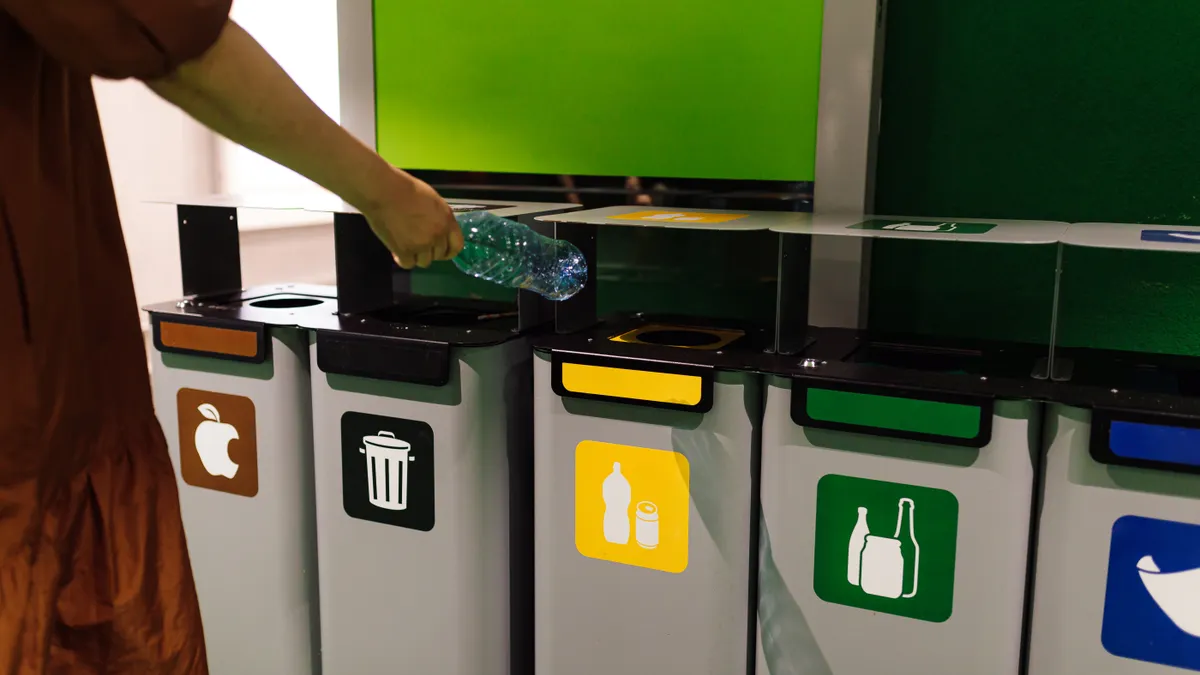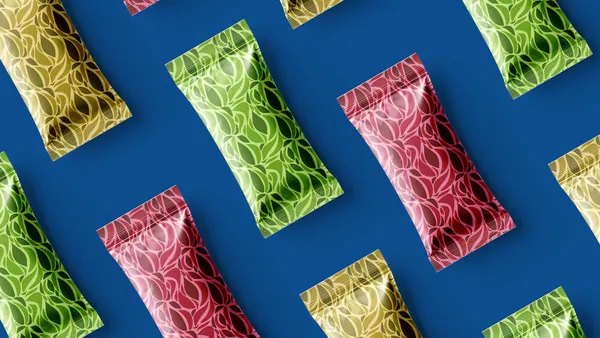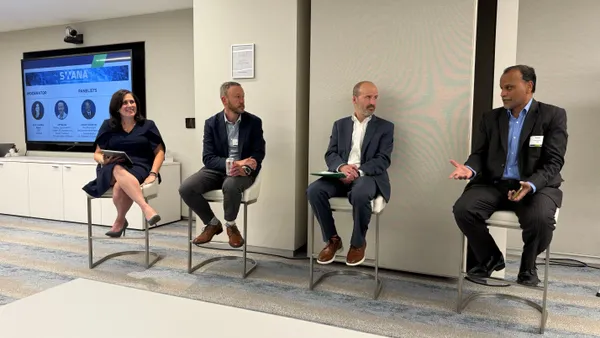BlueTriton Brands, the company behind bottled water labels including Pure Life, Deer Park, Poland Spring, Arrowhead and Ice Mountain, is now offering those waters in aluminum bottles. The expansion comes as aluminum packaging’s share grows in the water market more broadly, chipping away at some of PET’s dominance.
Bottled water has been the largest beverage category by volume in the U.S., according to Beverage Marketing Corp., which will soon release market data for 2023. Plastic containers have dominated the water market for their low cost and limited taste transfer attributes, and still water accounts for the majority of U.S. PET beverage container units, according to consultancy SBAcci.
According to data from market research firm Mintel, although PET still makes up the majority of packaging for water, its share has declined. There’s been an 83% rise in water packaged in aluminum containers between 2015 and today, and aluminum now has 36% share across all types of waters, which includes sparkling and enhanced products. Glass holds about a 4% share.
BlueTriton recently set a goal to make all of its packaging recyclable, reusable or compostable by 2030. The company said it counts the new aluminum bottles under the “recyclable” category. It’s also aiming for all beverage packaging to be made from an average of 50% “recycled or renewable material.” As of 2022, 56% of product packaging was reusable or made from an average of 35% recycled materials, the company reported.
BlueTriton did not conduct its own life cycle assessment when making the decision to offer aluminum bottles, but the company “consulted third party LCAs when we were considering this project,” per a spokesperson.
SBAcci President John Maddox, who focuses on supply and demand and commercial issues for PET resin and packaging applications, praises the sustainability profile of lightweighted PET bottles with recycled content, but he said consumer perception of sustainable options could drive aluminum purchases among some consumers willing to pay a premium.
A BlueTriton spokesperson said the aluminum bottles “are competitively priced to other aluminum bottle brands in the marketplace,” and also noted that the sizes offered differ from those it packages in PET. As of May 9, ReadyRefresh — a digital marketplace for ordering BlueTriton products, where the company said the aluminum products are most readily available — listed an 18-pack of 20-ounce Pure Life Purified Water in aluminum bottles at a promotional price of $23.99, or six to seven cents per ounce. A 32-pack of that same product in 16.9-ounce plastic bottles is listed at a promotional price of $8.99, or one to two cents per ounce.
David Luttenberger, global packaging director at Mintel, said that expanding into aluminum follows a pandemic-era trend of meeting consumers with different sizes, price points, desired use occasions and even positive end-of-life outcome opportunities like recycling or reuse.
“Legacy brands realize they need every opportunity possible to compete against upstart challenger brands, the boutique brands, because that’s where a lot of consumers find differentiation,” Luttenberger said.
Some of aluminum’s growth in water has to do with the rise in sparkling and flavored waters, which brands sought to differentiate from bottled water by using cans as a premiumization tactic. The aluminum also allows for sophisticated direct-print technologies for graphics, Luttenberger said. Potential taste issues with aluminum containers and their liners are also less of an issue when water is carbonated and flavored, said Maddox. Still, cans have also grown for non-flavored water launches in some markets, according to Mintel data.
Even with brands committing to reducing their overall use of plastic, price and convenience drive the marketplace for plain waters, Luttenberger said. “The fact is, a PET bottle of water is so convenient [and you] could buy a case for less than $3 at a club store.”
And switching packaging substrates is not easy for brands, he said.
“Sustainable packaging strategies are sustainable economic strategies,” Luttenberger said. “If you're set up to fill water in plastic, it’s not an easy proposition, nor something you can do economically, just to say, ‘OK, all of a sudden we’re going to change from plastic to glass, or glass to aluminum’ on a whim, because there's a huge cost involved with that.”
At this point, consumers expect sustainable packaging, he said. Between June 2022 and May 2023, 73% of bottled water launches in North America featured environmentally friendly packaging and recycling claims, per Mintel. But consumers don’t necessarily reward a brand with their purchases, according to Luttenberger. “So brands and package manufacturers are in a precarious position where they have to do the right thing. And I will say, across the board, everything that's done in the name of sustainable packaging is going to cost a brand more.”
BlueTriton did not name which packaging company is supplying the new bottles. The aluminum bottles supplement other glass packaging and large-format refillable options in BlueTriton’s portfolio, in addition to maintaining the original plastic packaging option, Chief Sustainability Officer Ed Ferguson said in emailed comments.
BlueTriton did not specify the scale of the rollout; a spokeperson simply said it’s “currently a small portion of our volume” given the recent introduction, but that output would increase with consumer demand. Sales locations vary.



